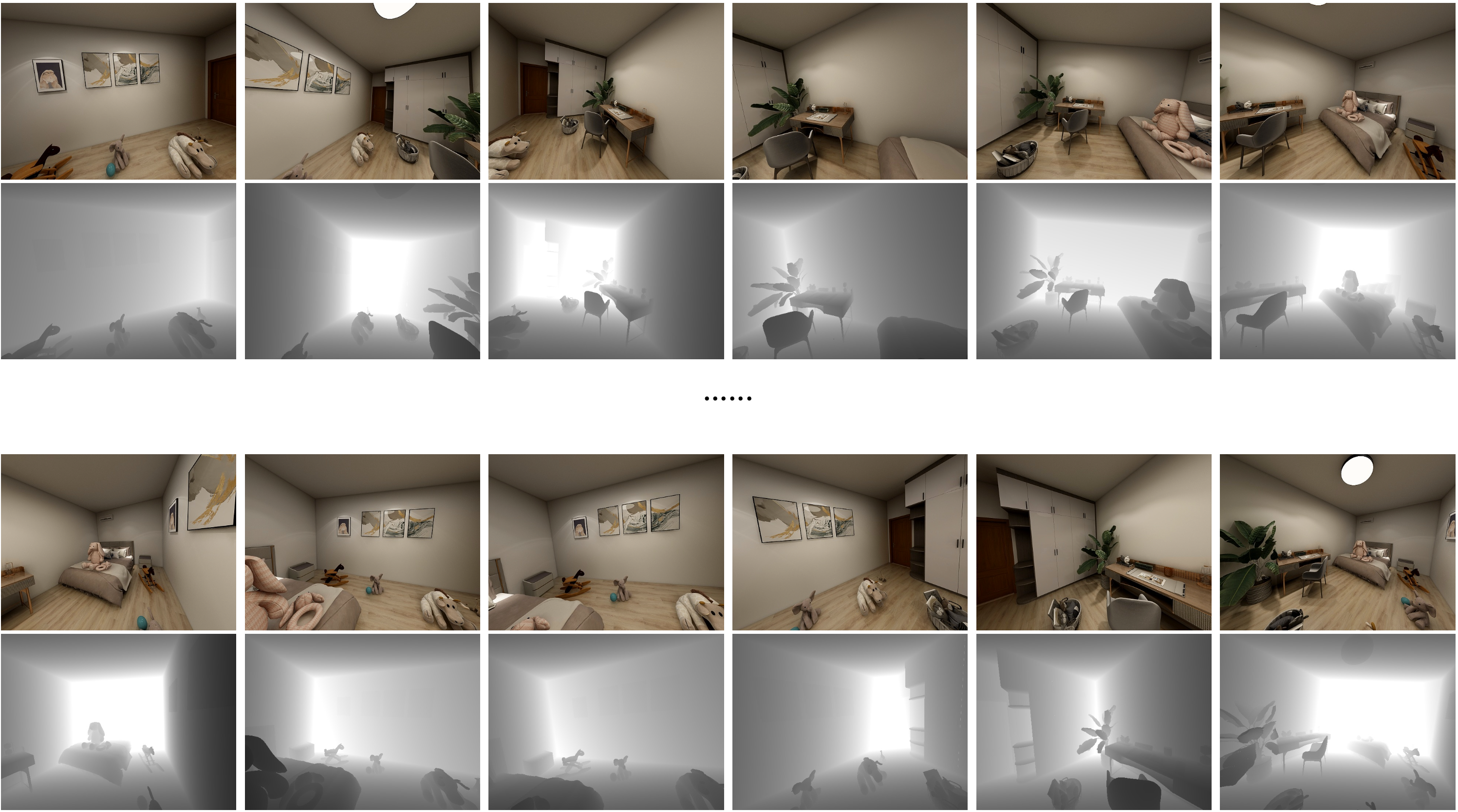SLAM
Introduction
Simultaneous localization and mapping (SLAM) is the computational problem of constructing or updating a map of an unknown environment while simultaneously keeping track of an agent's location within it1. Real-time, high-quality, 3D scanning of large-scale scenes is key to mixed reality and robotic applications like SLAM. In dense SLAM, a space is mapped by fusing the data from a moving sensor into a representation of the continuous surfaces.
In this experiment, we utilize our system for the SLAM learning task by generating images from a sequence of camera views, generated by our trajectory sampler.
More results of SLAM application can be found in the supplementary document.
DSL code
Our system give users the ability to create their custom camera trajectory.
We show an example of custom trajectory sampler DSL below.
import numpy as np
from math import sqrt
from shapely.geometry import Point
from shapely.ops import nearest_points
import glm
from ksecs.ECS.processors.entity_processor import EntityProcessor
from ksecs.ECS.processors.render_processor import RenderProcessor
class CustomTrajectorySampler(EntityProcessor):
def calculate_vel(self, velocity, step_time):
mu = glm.normalize(glm.vec2(np.random.normal(0, 1, size=2)))
FORCE = 100
f = FORCE * mu
PHI, A, C_D, M = 1.204, 0.09, 0.1, 1.0
d = -0.5 * glm.normalize(velocity) * PHI * A * C_D * glm.dot(velocity, velocity)
velocity = velocity + (d + f) * M * step_time
S_MAX = 10
if S_MAX < sqrt(glm.dot(velocity, velocity)):
velocity = S_MAX * glm.normalize(velocity)
return velocity
def process(self):
for camera in self.shader.world.cameras:
self.shader.world.delete_entity(camera)
key_points = []
for room in self.shader.world.rooms:
# init
room_points = []
room_polygon = room.gen_polygon()
camera_vel = glm.normalize(glm.vec2(np.random.normal(0, 1, size=2)))
camera_pos = glm.vec2(room.position)
# calcaulate key points
length_of_trajectory, delta_time, scale = 5, 0.03, 1000
for i in range(length_of_trajectory):
# update camera params
camera_vel = self.calculate_vel(camera_vel, delta_time)
new_position = camera_pos + scale * camera_vel * delta_time
next_camera_point = Point(tuple(new_position.xy))
if not next_camera_point.within(room_polygon):
p1, p2 = nearest_points(room_polygon, next_camera_point)
normal = glm.normalize(glm.vec2(p1.x - p2.x, p1.y - p2.y))
camera_vel = glm.reflect(camera_vel, normal)
camera_pos = camera_pos + scale * camera_vel * delta_time
room_points.append(list(camera_pos))
key_points.append(room_points)
self.make_traj(
imageHeight=960,
imageWidth=1280,
keyPoints=key_points,
speed=1200,
fps=3,
speedMode=1,
pitchMode=1,
pitch=[-10, 10],
hfov=70,
vfov=55,
height=1400,
heightMode=1,
cameraType="PERSPECTIVE"
)
class Render(RenderProcessor):
def process(self, *args, **kwargs):
self.gen_rgb(distort=0, noise=0)
MINERVAS output samples
After running with the DSL above, we can get a sequence of images (color and depth) along camera trajectory as shown below.

References
[1] wikipedia. Simultaneous localization and mapping. https://en.wikipedia.org/wiki/Simultaneous_localization_and_mapping.